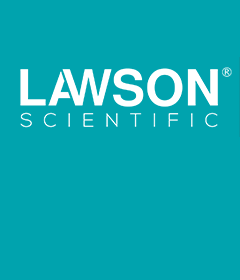Technical
How to choose ultrasonic cleaning machine
When purchasing an ultrasonic cleaning machine, the first is to understand how your products can be washed, the second is to achieve what kind of cleaning effect, and the third is to predict the output of your company's development will be How much is achieved, what is the maximum capacity of the machine to be purchased, the fourth step is to understand the cleaning process, ask yourself what kind of process is used in your peers, or consult the ultrasonic manufacturer if there is an updated cleaning process, the fifth is to choose Some professional manufacturers compare the cleaning process, price and after-sales service guarantee. Fraud of a bad manufacturer, the seventh is acceptance. If it is a large equipment, you should try your best to bring your workpiece to the manufacturer for on-site acceptance. The eighth is to train your company's employees after installation. Really learned and not trained as the installer said.
First, the choice of power: Ultrasonic cleaning sometimes uses low power, and it takes a long time to remove the dirt. And if the power reaches a certain value, the dirt will be removed quickly. If the selected power is too large, the cavitation strength will be greatly increased, and the cleaning effect will be improved, but at this time, the more precise parts also have pits, and the vibrating plate at the bottom of the cleaning machine is seriously cavitated, and the water pit corrosion also increases. When using organic solvents such as trichloroethylene, there is basically no problem, but when using water or water-soluble cleaning solution, it is easy to be corroded by water spots. The ultrasonic power should be selected according to the actual usage.
2. Frequency selection: Ultrasonic cleaning frequency is between 28 kHz and 120 kHz. When using water or water cleaning agent, the physical cleaning force caused by cavitation is obviously beneficial to low frequency. Generally, 28 kHz is used. -40kHz or so. For cleaning parts with small gaps, slits and deep holes, it is better to use high frequency (generally above 40kHz), even hundreds of kHz. When cleaning watch parts, use 100kHz. If the broadband frequency modulation cleaning is used, the effect is better.
Third, the use of cleaning baskets: When cleaning small parts, mesh baskets are often used, because the mesh will cause ultrasonic attenuation, and special attention should be paid. When the frequency is 28khz, it is better to use a mesh of more than 10mm.
Fourth, cleaning fluid temperature: the most suitable cleaning temperature for water cleaning fluid is 40-60 ℃, especially in cold weather, if the temperature of the cleaning fluid is low, the cavitation effect is poor, and the cleaning effect is also poor. Therefore, some cleaning machines wind the heating wire outside the cleaning cylinder to control the temperature. When the temperature rises, cavitation is easy to occur, so the cleaning effect is better. When the temperature continues to rise, the gas pressure in the cavitation increases, causing the impact sound pressure to drop, and the effect will also weaken. The organic solvent cleaning solution should be cleaned at a temperature close to the boiling point.
5. Determination of the amount of cleaning liquid and the location of cleaning parts: Generally, the liquid level of cleaning liquid is higher than the surface of the vibrator by more than 100mm. Because the single-frequency cleaning machine is affected by the standing wave field, the amplitude at the node is small, and the amplitude at the wave amplitude is large, resulting in uneven cleaning. Therefore, the best choice for cleaning items should be placed at the amplitude. (The more effective range is 3-18 cm)
6. Selection of ultrasonic cleaning process and cleaning fluid: Before purchasing a cleaning system, the following application analysis should be done on the cleaned parts: Determine the material composition, structure and quantity of the cleaned parts, analyze and clarify the requirements The dirt removed, these are the prerequisites for deciding what cleaning method to use, and judging whether to use an aqueous cleaning solution or a solvent. The final cleaning process needs to be verified by cleaning experiments. Only in this way can a suitable cleaning system, a rationally designed cleaning process and a cleaning solution be provided. Considering the influence of the physical properties of the cleaning fluid on ultrasonic cleaning, the vapor pressure, surface tension, viscosity and density should be the most significant influencing factors. Temperature can affect these factors, so it also affects the efficiency of cavitation. Any cleaning system must use cleaning fluid.
7. When choosing a cleaning solution, the following three factors should be considered:
1 . Cleaning Efficiency: When choosing the most effective cleaning solvent, be sure to experiment. If ultrasound is introduced into the existing cleaning process, the solvent used generally does not need to be changed;
2 . Simple operation: the liquid used should be safe, non-toxic, easy to operate and have a long service life;
3 . Cost: The cheapest cleaning solvent is not necessarily the cheapest to use. In use, factors such as cleaning efficiency, safety, and the highest utilization rate of workpieces that can be cleaned by a certain amount of solvent must be considered. Of course, the cleaning solvent chosen must achieve cleaning results and be compatible with the workpiece material being cleaned. Water is the most common cleaning solution, so systems using water-based solutions are easy to operate, low in cost, and widely used. However, for some materials and soils, etc., not suitable for aqueous solutions, there are many solvents available. Different cleaning fluids, different cleaning systems Aqueous system: usually consists of an open tank in which the workpiece is immersed. The complex system consists of multiple tanks and is equipped with a circulating filter system, a shower tank, a drying tank and other accessories.
Solvent system: Most of them are ultrasonic vapor-phase degreasing cleaning machines, often equipped with continuous waste liquid recovery devices. The ultrasonic vapor phase removal of grease is completed by an integrated multi-tank system consisting of a solvent evaporation tank and an ultrasonic dip tank. Oil, grease, wax, and other solvent-soluble soils are removed by the combined use of hot solvent vapor and ultrasonic agitation. The workpiece unloaded after a series of cleaning processes is hot, clean and dry.
Eight, cleaning parts processing: Another consideration for ultrasonic cleaning is the design of the loading and unloading of the cleaning parts or the design of the tooling for placing the cleaning parts. When the cleaning piece is in the ultrasonic cleaning tank, neither the cleaning piece nor the cleaning piece basket shall touch the bottom of the tank. The total cross-sectional area of the cleaning parts should not exceed 70% of the cross-sectional area of the ultrasonic tank. Rubber and non-rigid plastics absorb ultrasonic energy, so caution should be exercised when using these materials in tooling. Insulated cleaning parts should also be given special attention. Improperly designed tooling baskets, or holding workpieces that are too heavy, can greatly reduce the efficiency of even the best ultrasonic cleaning systems. Hooks, racks and beakers can be used to support cleaning pieces. Cleaning time: 1-10 minutes, it is best to use regular cleaning.




